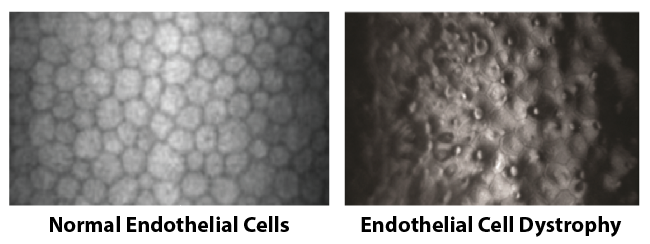Fuchs’ Dystrophy
Fuchs’ Endothelial Dystrophy (FED) is a progressive degenerative disorder that specifically targets the corneal endothelium. The endothelial cells, constituting one of the four fundamental types of animal tissue, play vital roles in bodily functions such as secretion, absorption, protection, transcellular transport, and sensation. These specialized cells maintain corneal clarity by regulating fluid balance, ensuring optimal visual acuity. However, in individuals with FED, the endothelial cells gradually deteriorate over time, compromising their ability to maintain corneal transparency. This dysfunction leads to corneal edema, thickening, and eventually, vision impairment. FED underscores the importance of preserving endothelial health for maintaining clear, healthy vision.

How Does It Affect The Eyes?
As endothelial cells gradually deteriorate, the eye loses its natural ability to regulate its own pressure. This build-up of pressure can lead to the thickening of the Descemet’s membrane, which lies between the stroma and the endothelial layer of the cornea. This condition can lead to increased swelling or corneal stroma edema, which can cause damaged vision by causing changes in the natural curvature of the cornea. Fuchs’ Dystrophy usually affects both eyes and is more common in women than in men.
Although early signs of FED can often be detected in patients as young as 30, the disease rarely begins to effect the vision until well into the 50’s and 60’s. Often times patients suffering from FED will notice that they wake in the morning experiencing blurred vision which clears throughout the day, this is caused by a retention of fluid during sleep.



